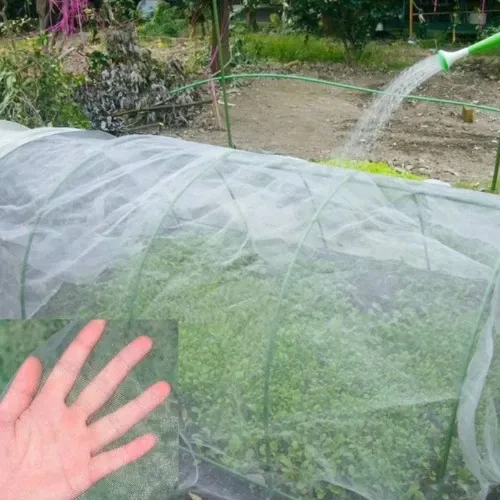-
 Afrikaans
Afrikaans -
 Albanian
Albanian -
 Amharic
Amharic -
 Arabic
Arabic -
 Armenian
Armenian -
 Azerbaijani
Azerbaijani -
 Basque
Basque -
 Belarusian
Belarusian -
 Bengali
Bengali -
 Bosnian
Bosnian -
 Bulgarian
Bulgarian -
 Catalan
Catalan -
 Cebuano
Cebuano -
 China
China -
 Corsican
Corsican -
 Croatian
Croatian -
 Czech
Czech -
 Danish
Danish -
 Dutch
Dutch -
 English
English -
 Esperanto
Esperanto -
 Estonian
Estonian -
 Finnish
Finnish -
 French
French -
 Frisian
Frisian -
 Galician
Galician -
 Georgian
Georgian -
 German
German -
 Greek
Greek -
 Gujarati
Gujarati -
 Haitian Creole
Haitian Creole -
 hausa
hausa -
 hawaiian
hawaiian -
 Hebrew
Hebrew -
 Hindi
Hindi -
 Miao
Miao -
 Hungarian
Hungarian -
 Icelandic
Icelandic -
 igbo
igbo -
 Indonesian
Indonesian -
 irish
irish -
 Italian
Italian -
 Japanese
Japanese -
 Javanese
Javanese -
 Kannada
Kannada -
 kazakh
kazakh -
 Khmer
Khmer -
 Rwandese
Rwandese -
 Korean
Korean -
 Kurdish
Kurdish -
 Kyrgyz
Kyrgyz -
 Lao
Lao -
 Latin
Latin -
 Latvian
Latvian -
 Lithuanian
Lithuanian -
 Luxembourgish
Luxembourgish -
 Macedonian
Macedonian -
 Malgashi
Malgashi -
 Malay
Malay -
 Malayalam
Malayalam -
 Maltese
Maltese -
 Maori
Maori -
 Marathi
Marathi -
 Mongolian
Mongolian -
 Myanmar
Myanmar -
 Nepali
Nepali -
 Norwegian
Norwegian -
 Norwegian
Norwegian -
 Occitan
Occitan -
 Pashto
Pashto -
 Persian
Persian -
 Polish
Polish -
 Portuguese
Portuguese -
 Punjabi
Punjabi -
 Romanian
Romanian -
 Russian
Russian -
 Samoan
Samoan -
 Scottish Gaelic
Scottish Gaelic -
 Serbian
Serbian -
 Sesotho
Sesotho -
 Shona
Shona -
 Sindhi
Sindhi -
 Sinhala
Sinhala -
 Slovak
Slovak -
 Slovenian
Slovenian -
 Somali
Somali -
 Spanish
Spanish -
 Sundanese
Sundanese -
 Swahili
Swahili -
 Swedish
Swedish -
 Tagalog
Tagalog -
 Tajik
Tajik -
 Tamil
Tamil -
 Tatar
Tatar -
 Telugu
Telugu -
 Thai
Thai -
 Turkish
Turkish -
 Turkmen
Turkmen -
 Ukrainian
Ukrainian -
 Urdu
Urdu -
 Uighur
Uighur -
 Uzbek
Uzbek -
 Vietnamese
Vietnamese -
 Welsh
Welsh -
 Bantu
Bantu -
 Yiddish
Yiddish -
 Yoruba
Yoruba -
 Zulu
Zulu
steel fibers in concrete
The Role of Steel Fibers in Concrete Enhancing Durability and Performance
Concrete is one of the most widely used construction materials in the world, prized for its strength, durability, and versatility. However, conventional concrete can suffer from various issues such as cracking, low tensile strength, and brittleness, which can undermine its performance in structural applications. To address these challenges, the incorporation of steel fibers into concrete has emerged as a promising solution, significantly enhancing its mechanical properties and durability.
What are Steel Fibers?
Steel fibers are small, thin strands of steel that are uniformly distributed throughout the concrete mix. They come in various shapes and sizes, including hooked ends, crimped, and straight, with lengths typically ranging from 0.5 inches to 2 inches. These fibers act as reinforcement throughout the concrete matrix, providing a secondary form of support that complements the traditional reinforcement methods, such as rebar and welded wire mesh.
Benefits of Steel Fibers in Concrete
1. Increased Toughness One of the primary benefits of adding steel fibers to concrete is the improved toughness and ductility. Unlike traditional concrete, which exhibits brittle failure, steel fiber-reinforced concrete (SFRC) can absorb more energy under load, allowing for greater deformation before failure. This characteristic is particularly valuable in applications subjected to dynamic loads, impacts, or vibrations.
2. Reduced Crack Formation Cracking is a common issue in concrete structures, often arising from shrinkage during curing or temperature changes. By incorporating steel fibers, the tensile strength of concrete is significantly improved, reducing the likelihood of crack formation and propagation. The fibers effectively bridge cracks that do occur, preventing further deterioration and extending the lifespan of the structure.
3. Enhanced Load-Bearing Capacity Steel fibers improve the overall structural integrity of concrete by providing additional support. This enhancement is particularly beneficial in thin slabs and pavements, where the risk of cracking under load is higher. In applications such as industrial flooring, where heavy machinery is often used, steel fiber-reinforced concrete can provide the necessary robustness and longevity.
steel fibers in concrete

4. Improved Impact Resistance Structures subjected to impact forces, such as pavement and precast elements, benefit significantly from the use of steel fibers. The fibers help to distribute impact loads more evenly throughout the concrete, minimizing localized stress concentrations that can lead to failure. This property makes SFRC an ideal choice for applications like airport runways, industrial floors, and tunnel linings.
5. Reduced Environmental Impact By enhancing the performance of concrete, steel fibers can potentially reduce the amount of material required for construction. Thinner sections can be used without compromising strength, ultimately leading to lower material consumption and a decreased carbon footprint associated with concrete production.
Applications of Steel Fiber-Reinforced Concrete
The use of steel fibers in concrete is proliferating across various sectors due to their numerous benefits. In the construction industry, they are frequently utilized in
- Industrial Flooring SFRC is often used in warehouses and manufacturing facilities where heavy loads and high traffic are common. - Pavements and Overlays Steel fibers enhance the durability and longevity of roadways and airport pavements. - Shotcrete The addition of steel fibers to shotcrete enhances its stability and reduces rebound, making it ideal for tunnel linings and underground applications. - Precast Products Steel fiber reinforcement is used in the production of precast concrete elements, maximizing performance and reducing weight.
Conclusion
The integration of steel fibers into concrete significantly enhances the material's performance characteristics, addressing many of the limitations associated with conventional concrete. As the construction industry increasingly seeks innovative solutions for improved durability and sustainability, steel fiber-reinforced concrete stands out as a versatile and effective option. The ongoing research and development in this area promise even greater advancements, further establishing steel fibers as an essential component in modern concrete technology.
-
Shipping Plastic Bags for Every NeedNewsJul.24,2025
-
Safety Netting: Your Shield in ConstructionNewsJul.24,2025
-
Plastic Mesh Netting for Everyday UseNewsJul.24,2025
-
Nylon Netting for Every UseNewsJul.24,2025
-
Mesh Breeder Box for Fish TanksNewsJul.24,2025
-
Expanded Steel Mesh Offers Durable VersatilityNewsJul.24,2025











